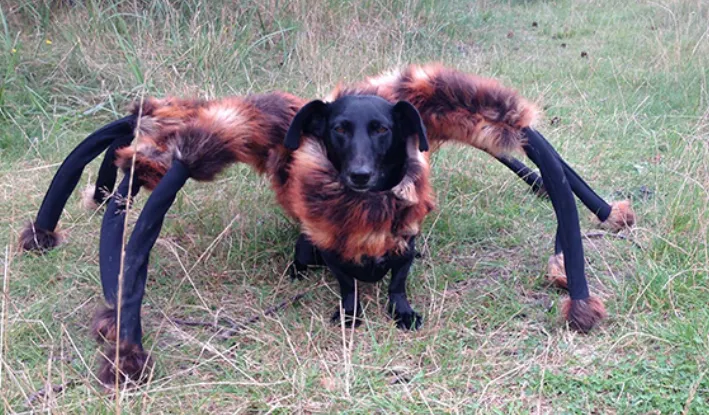Unlocking Dog Training Secrets
Embarking on the journey of dog training can be an incredibly rewarding experience, fostering a stronger bond between you and your furry companion. However, it’s also a process that requires patience, consistency, and a deep understanding of canine behavior. This guide unveils seven must-know secrets to help you transform your dog into a well-behaved and happy member of the family. From understanding the fundamental principles of canine psychology to mastering effective training techniques, we’ll equip you with the knowledge and tools needed to succeed. Forget the frustration of unwanted behaviors and embrace the joy of a well-trained dog. This is your roadmap to a harmonious life with your best friend.
Understanding Canine Psychology
Before diving into specific training methods, it’s crucial to understand the basics of canine psychology. Dogs, unlike humans, learn primarily through association. They connect actions with consequences, both positive and negative. Their behavior is driven by their instincts, which include the need for social structure, the desire to please, and the urge to explore their environment. Recognizing these inherent traits is essential for effective training. Observe your dog’s body language, paying attention to cues like tail wags, ear position, and posture. This will help you interpret their emotions and respond appropriately. Understanding your dog’s perspective is the foundation of successful training.
Positive Reinforcement Techniques

Positive reinforcement is the cornerstone of modern dog training. It focuses on rewarding desired behaviors, making your dog more likely to repeat them. This method builds a positive relationship based on trust and mutual respect. Use treats, praise, toys, or anything your dog finds motivating as rewards. The key is to deliver the reward immediately after the desired behavior. This creates a clear association in your dog’s mind. Avoid punishment-based methods, which can create fear, anxiety, and damage your relationship. Positive reinforcement not only makes training more effective but also strengthens the bond between you and your dog, leading to a happier and more well-adjusted pet.
The Power of Rewards
The type of reward you use can significantly impact your training success. High-value rewards, such as small, tasty treats, are especially effective when teaching new commands or dealing with challenging behaviors. However, vary the rewards to keep your dog engaged. Sometimes, praise and affection are enough. Toys can also be great motivators, especially for dogs that are less food-motivated. Experiment to find what motivates your dog the most. Remember, the goal is to make training fun and rewarding for both you and your dog. Tailor your rewards to your dog’s individual preferences to maximize their effectiveness.
Effective Command Training
Teaching your dog basic commands is a crucial part of their training and safety. Start with simple commands like “sit,” “stay,” “come,” and “down.” Use clear, concise verbal cues and pair them with hand signals. Break down each command into small steps. For instance, to teach “sit,” hold a treat in front of your dog’s nose and move it upwards and towards their head, encouraging them to sit. As they start to sit, say “sit” and reward them. Repeat this process, gradually fading the lure. Consistency is key. Practice each command in short, frequent sessions. Always end training sessions on a positive note. This builds your dog’s confidence and makes them look forward to the next session.
Essential Commands

Beyond the basics, certain commands are essential for your dog’s safety and well-being. “Leave it” is a crucial command that can prevent them from ingesting dangerous objects. “Come” is vital for recall and ensures your dog returns to you when called. “Stay” teaches impulse control and is useful in various situations. “Heel” teaches your dog to walk politely by your side, making walks more enjoyable. Practice these commands in different environments and with distractions to ensure your dog responds reliably. Regular practice and reinforcement of these essential commands will contribute to a safer and more obedient dog, allowing you to have more control and enjoy your time together.
Consistency is Key
Consistency is a cornerstone of successful dog training. Use the same commands and hand signals consistently to avoid confusing your dog. Everyone in the household should use the same language and training methods. Be consistent with your expectations and rewards. If you allow a behavior sometimes and not others, your dog will struggle to understand what’s expected. Regular, short training sessions are more effective than infrequent, long ones. Even five to ten minutes of training each day can make a significant difference. Celebrate small victories and don’t get discouraged by setbacks. Consistency creates clarity, which leads to faster learning and a well-behaved dog.
Addressing Common Training Challenges
Training challenges are a normal part of the process. Patience and understanding are essential when dealing with difficult behaviors. Each dog learns at their own pace, and what works for one dog may not work for another. If you encounter persistent problems, consider seeking guidance from a certified professional dog trainer or behaviorist. They can assess your dog’s behavior and provide customized solutions. Remember to remain positive and avoid getting frustrated. Celebrate small successes, and never give up on your dog. With the right approach, even the most challenging behaviors can be corrected, leading to a happier and better-adjusted dog.
Dealing with Jumping

Jumping is a common, yet often unwanted, behavior. The best approach is to prevent it from happening in the first place. When greeting guests, ask them to ignore your dog until they have all four paws on the ground. Redirect your dog’s attention by asking them to sit or giving them a toy. If your dog jumps, calmly turn your back and ignore them until they stop. Then, reward the desired behavior – sitting or remaining on the ground. Avoid giving your dog attention when they are jumping, as this can inadvertently reinforce the behavior. Be patient, consistent, and reward good behavior. Eventually, your dog will learn that jumping doesn’t get them the attention they crave.
Managing Excessive Barking
Excessive barking can be disruptive and frustrating, but there are effective ways to manage it. Determine the cause of the barking. Is your dog bored, anxious, or territorial? Address the underlying cause. Provide plenty of exercise and mental stimulation to prevent boredom. Train your dog to “speak” and “quiet” on command to give them an acceptable outlet for barking. If anxiety is the issue, consider using calming aids or seeking professional help. Avoid yelling at your dog, as this can escalate the barking. Instead, redirect their attention with a toy or command. Positive reinforcement is key. Reward quiet behavior and create a calm environment.
Socialization for a Well-Behaved Dog
Socialization is critical for a well-adjusted dog. Expose your dog to a variety of people, places, and experiences during their early development, typically between 3 and 16 weeks of age. This helps them develop into confident and well-behaved adults. Make sure all interactions are positive and controlled. Start with short, positive encounters and gradually increase the exposure. Supervise all interactions, especially with children and other animals. Early socialization can prevent fear and aggression later in life. A well-socialized dog is more likely to be friendly, adaptable, and comfortable in various situations, making them a joy to have around.
Introducing Socialization Early

The critical socialization period is during a puppy’s early months. Even before they are fully vaccinated, you can begin introducing them to safe, controlled environments and people. Carry your puppy around to get them accustomed to new sights and sounds. Arrange playdates with vaccinated, friendly dogs. Introduce them to a variety of people of different ages, races, and appearances. Expose them to common household items like vacuums and blenders, ensuring these experiences are positive. Early socialization can help shape a well-adjusted and confident adult dog. However, always prioritize safety and ensure all interactions are positive and stress-free.
Creating Positive Social Experiences
When socializing your dog, prioritize positive experiences. Keep interactions short and sweet to avoid overwhelming your dog. Use positive reinforcement, such as treats and praise, to associate new experiences with positive feelings. If your dog shows signs of fear or anxiety, remove them from the situation and try again later. Never force your dog to interact with anything they are uncomfortable with. Observe your dog’s body language and respond accordingly. A positive approach builds confidence and makes socialization a fun and rewarding process. The more positive experiences they have, the more adaptable and well-adjusted they will become.
Grooming and Exercise for a Happy Dog
Grooming and exercise are essential components of a happy and well-behaved dog. Regular grooming keeps your dog healthy and comfortable, preventing matting, skin problems, and other issues. It also provides an opportunity to bond with your dog. Brushing their coat, trimming their nails, and cleaning their ears should be part of your routine. Exercise is equally crucial. It provides physical and mental stimulation, preventing boredom and destructive behaviors. Tailor the amount of exercise to your dog’s breed, age, and energy level. Include a variety of activities, such as walks, runs, playtime, and training sessions. A well-groomed and exercised dog is generally a happier, healthier, and better-behaved dog.
In conclusion, training a dog is a journey that requires dedication, patience, and a willingness to learn. By understanding canine psychology, utilizing positive reinforcement, and addressing common training challenges, you can transform your dog into a well-behaved companion. Remember to prioritize socialization, provide consistent training, and create a positive environment. With these secrets in mind, you’re well on your way to building a strong bond with your furry friend and enjoying a lifetime of shared happiness. Embrace the process, celebrate the small victories, and enjoy the rewarding experience of training your dog.
